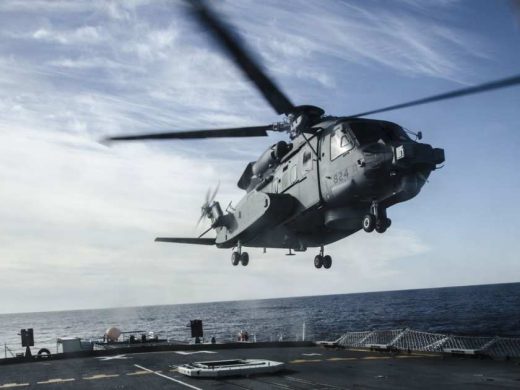 Scroll Down to see all of this week’s updates
Scroll Down to see all of this week’s updates
Misfueling Led To Crash

The Transportation Safety Board has confirmed earlier speculation that a piston-powered Piper Navajo had been fueled with Jet A before an off-airport landing near Thompson, Manitoba a year ago.
The Keystone Air Service Navajo suffered a dual engine failure shortly after takeoff from Thompson last September 15 and the pilots put it down in a bushy area next to a highway.
They had tried for the highway but there was too much traffic. All six passengers and two pilots had varying injuries but there were no fatalities.
The plane was filled up at Thompson and it took some doing to get Jet A in the tanks, according to the report.
“In particular, a flared spout, meant for use on Jet-A1 fuel filler openings, was replaced with a spout to enable the delivery of Jet-A1 fuel into the PA-31’s smaller fuel tank openings,” the report said.
The board also found the pilots didn’t supervise the fueling and didn’t get a receipt.
After the mishap, Keystone reminded its pilots to make sure they got the right fuel but it was too little to late for Transport Canada.
TC had a good look at Keystone’s operation and cancelled the airline’s operator certificate.
Engine Bottleneck Stalls CSeries

Bombardier says it can’t build the number of CSeries it wants to this year because Pratt & Whitney can’t deliver the engines it needs.
Bombardier will only be able to build seven CSeries this year compared to the 15 it wanted to.
The CSeries is the launch customer for Pratt’s new highly efficient PurePower geared turbofan and neither the airframer or engine maker are saying what the problem is.
But both companies say they’re confident the issues will be dealt with as Bombardier ramps up to build 90 to 120 aircraft a year by 2020.
The production slowdown will hurt Bombardier’s cash flow a little but shouldn’t threaten the program.
Cyclone Phase-In Through 2025

It will take the RCAF nine years to make its new Cyclone anti-submarine helicopter fleet fully operational but that’s OK because the Navy doesn’t have enough ships to hold them.
That’s the observation of analysts as they watch the inevitable unfold after years of procurement problems with the Canadian military. The Cyclones won’t be fully operational until seven years after the Sea Kings are gone.
“We’re fortunate, in a way, because we have lost four-to-five ships, but we actually ordered a full complement of helicopters for a navy that no longer exists,” George Petrolekas, of the Conference of Defence Associations Institute told the CBC.
“It is really a case study in how not to acquire something.”
The first Cyclones have been delivered and pilots are being trained but integrating the 28 state-of-the-art aircraft will take until 2025.
Meanwhile, the government has ordered more ships and the two schedules might actually mesh.
For now, however, there is a gap in Canada’s defences at a time when maritime threats are on the rise, according to Dave Perry, an analyst with the Canadian Globa Affairs Institute.
“Currently, we’re lagging in this area, and getting a fully capable maritime helicopter is crucial, along with maritime patrol assets and capable subs. If the FOC date is now 2025, the project has fallen behind, again, at a time when their [anti-submarine warfare] capabilities are needed more than ever.”
Pilot Killed in Twin Crash

The pilot of a privately owned Piper Twin Comanche was killed Monday when the aircraft went down in a densely populated area of Powell River, B.C.
The airplane crashed in a bushy area of downtown Powell River between grocery store and an apartment building.
Police later confirmed the pilot and owner of the plane David Tetarenko, 54, of Port Coquitlam, died in the crash.
The aircraft was on a flight from Pitt Meadows to Powell River where Tetarenko was picking up passengers who had been attending a funeral.
Circumstances of the crash aren’t clear and both the TSB and Transport Canada are investigating.
